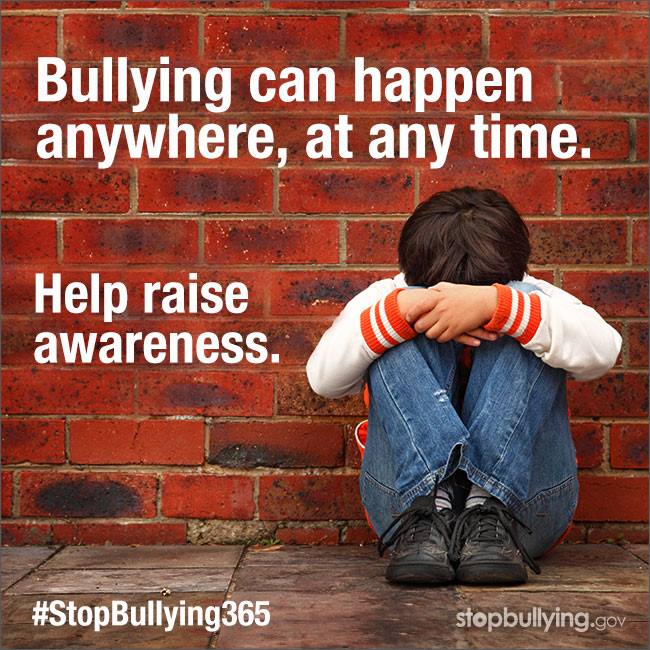Students learn best and achieve their full potential when they feel safe and secure at school, on the bus, and at home. Bullying is not only a threat to a child’s safety and well-being; it’s a threat to his or her education.
October is National Bullying Prevention Month, a time for everyone to raise awareness about this serious problem and to do their part to end it in our schools.
The nature of bullying has changed over time. It can involve direct physical contact such as hitting as well as verbal aggression such as threats, name calling, or spreading rumors intended to cause emotional harm.

The rise of social media and texting have led to new and more sophisticated ways for bullies to reach their victims. No longer is bullying confined to face-to-face encounters. No longer can victims of bullying retreat to the safety of their homes at the end of the day.
Despite the growing attention bullying has received, many children who are victims remain reluctant to discuss it with their parents or guardians. That is why it is so important for caring adults to recognize the warning signs of bullying and to make sure students have the tools they need to communicate with adults about it.
National Bullying Prevention Awareness Month is a time to do just that. Here are a few ways you can get involved:
- PACER’s National Bullying Prevention Center, which started National Bullying Prevention Awareness Month nearly a decade ago, has created resources, classroom materials, and an event toolkit through its You’re Not Alone campaign to raise awareness and provide support for those who have been bullied.
- On Wednesday, Oct. 21, students and parents are encouraged to join educators, TV personalities, and thousands of others by wearing orange as part of National Unity Day.
- You can add your name to the digital “The End of Bullying Begins with Me” petition.
- Talk in your community about bullying prevention.
- Learn more from PACER’s National Bullying Prevention Center’s three websites: PACER.org/bullying, PACERTeensAgainstBullying.org, and PACERKidsAgainstBullying.org. You can find videos, classroom toolkits, bookmarks, and posters that can be used to prevent bullying all year long.
Raising awareness of this problem and acting in the best interest of all school children are important first steps toward safer, healthier schools.